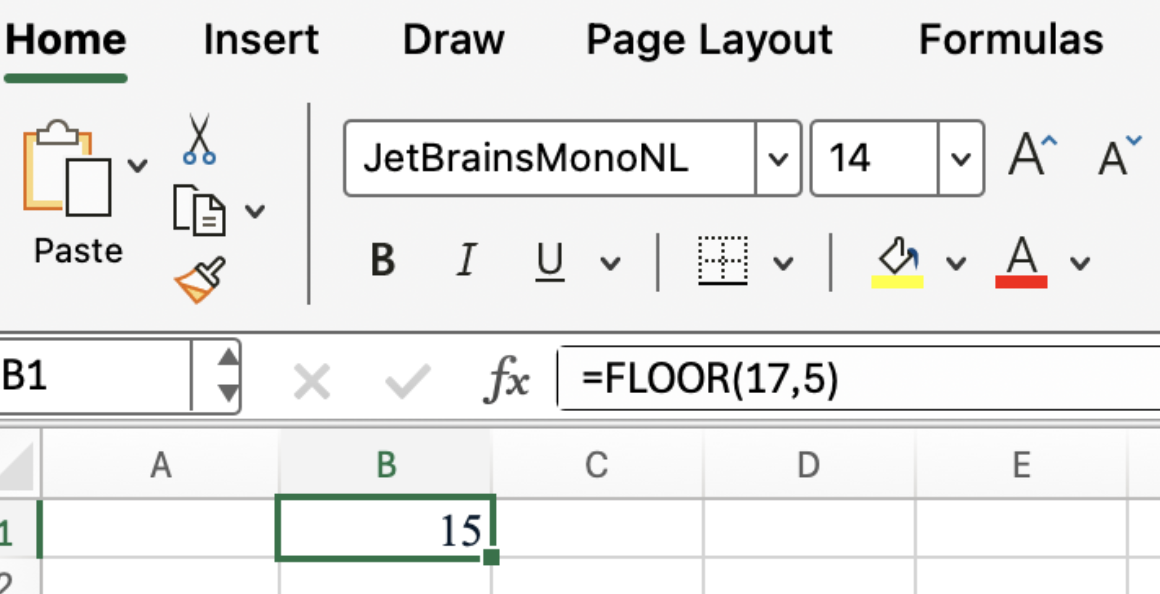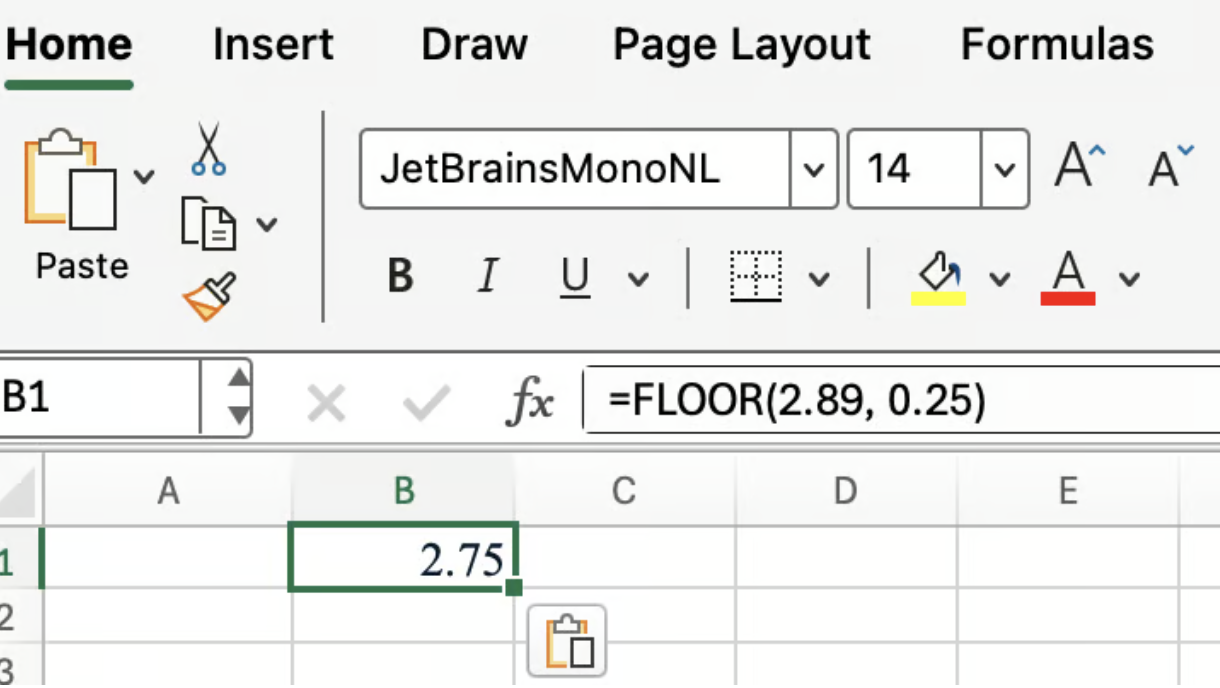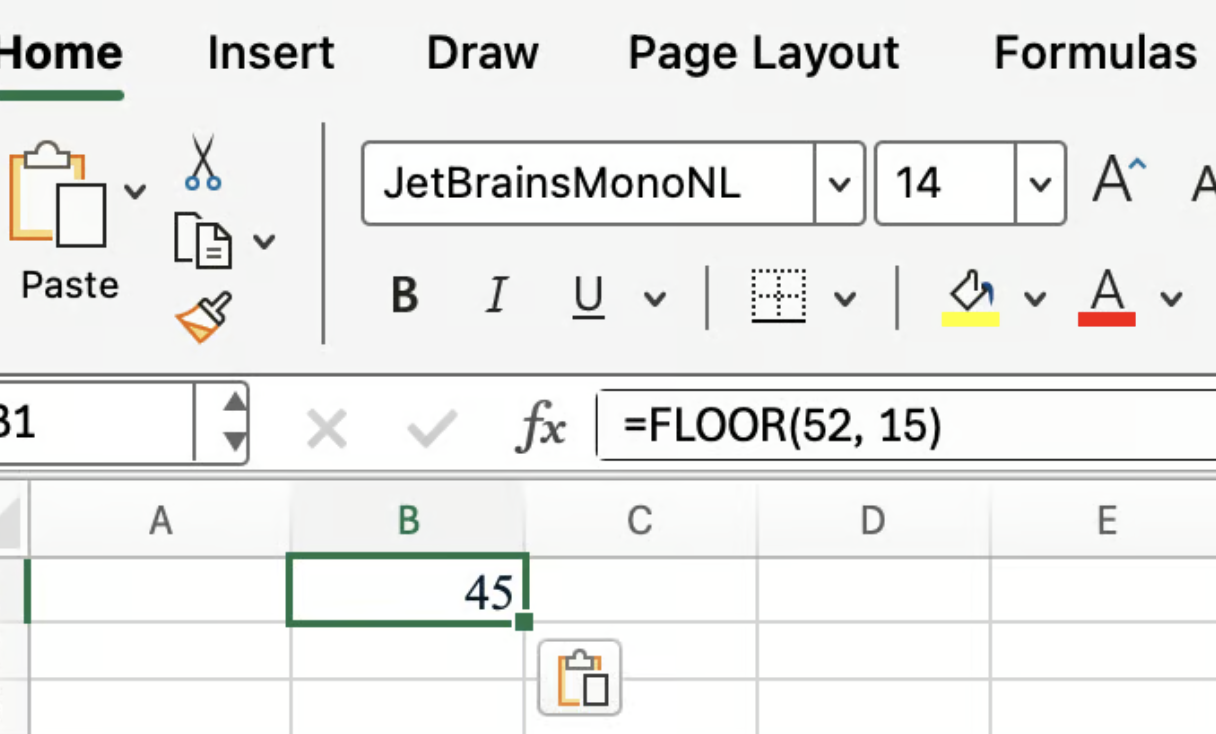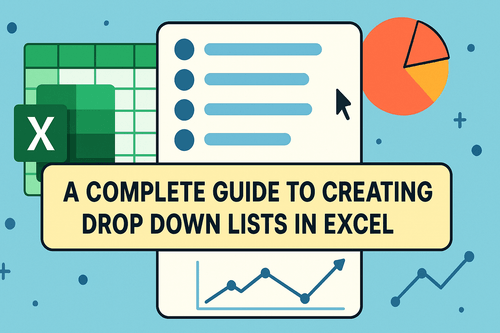Key Takeaways
- Manual rounding in Excel requires memorizing complex formula syntax that often confuses business users who just need quick pricing or time calculations
- Excelmatic's AI approach eliminates formula complexity - simply describe your rounding needs in plain language and get instant results
- The platform automatically handles technical rules and error prevention, avoiding common mistakes like sign mismatches that break traditional formulas
- For sales pricing, financial reporting, and time management, Excelmatic provides the fastest path from raw numbers to properly rounded results
If you spend time managing budgets, setting prices, or organizing schedules, you know that precision is key. Excel's FLOOR() function is a classic tool for this, helping you round numbers down to a specific increment.
In this article, we’ll walk through how FLOOR() works with real examples. We'll also explore a modern, AI-powered alternative that can achieve the same results without you ever having to write a formula.
The Traditional Method: How Excel's FLOOR() Function Works
Before we dive into AI solutions, it's important to understand the logic of the FLOOR() function and how to control its behavior.
FLOOR() is all about rounding numbers down. You can round to the nearest whole number, or you can specify a "significance" (an increment) to round down in steps that make sense for your scenario. This is especially handy for things like unit prices or fixed time intervals, where rounding needs to follow a specific pattern.
This is how you call FLOOR() in Excel:
=FLOOR(number, significance)
number: The value you want to round down.significance: The multiple to which you want to round.
Both arguments are required for FLOOR() to work properly. The function always rounds down (toward zero for positive numbers, and away from zero for negative numbers) using the significance as the step size.
How to Round Down a Positive Number
Let’s try a basic example. Suppose you want to round the number 17 down to the nearest multiple of 5:
=FLOOR(17, 5)
This formula returns 15.

How to Round Down a Negative Number
If your number is negative, FLOOR() rounds "down" away from zero. So, for -17 and a significance of 5:
=FLOOR(-17, -5)
This returns -20. Note that the significance must share the same sign as the number.

The AI-Powered Way: Using Excelmatic to Round Down Numbers
Manually writing formulas works, but it requires you to remember the function's syntax, arguments, and rules. A more modern approach is to use an AI Excel Agent like Excelmatic.

With Excelmatic, you don't need to be a formula expert. You simply upload your spreadsheet and state your goal in plain language.
For instance, instead of typing =FLOOR(A2, 0.25) and dragging the formula down a column of prices, you could upload your file to Excelmatic and ask:
In the 'Product Prices' column, round all the values down to the nearest 0.25.
Excelmatic understands your request and performs the calculation across the entire dataset instantly, without you writing a single formula.
Traditional Method vs. Excelmatic
| Feature | Traditional Method (FLOOR() formula) |
Excelmatic (AI Agent) |
|---|---|---|
| Process | Manually type formula, handle cell references, and drag to apply. | Upload file and type a command in plain language. |
| Learning Curve | Requires memorizing function syntax, arguments, and error rules. | Intuitive and conversational; no syntax required. |
| Speed | Slower, especially for large or multiple datasets. | Instant results for the entire dataset. |
| Error Handling | User must diagnose and fix errors like #NUM!. |
The AI handles the underlying logic and avoids common errors. |
| Flexibility | Limited to what the specific function can do. | Can handle rounding tasks in a single request. |
Practical Uses for Rounding Down
Whether you use a formula or an AI tool, the applications are the same. Here are some common and useful scenarios:
Controlling Prices or Costs
One classic use is in pricing, where you want to round down to fixed increments to avoid accidental overcharges. For instance, if your products are priced in steps of 25 cents, you can ensure all prices land on those increments.
With FLOOR():
=FLOOR(2.89, 0.25)

This formula returns 2.75, neatly rounding 2.89 down to the next lowest quarter-dollar.
With Excelmatic: Simply ask, "Round down all prices to the nearest 0.25."
Organizing Time in Fixed Blocks
Rounding down is also great for managing time, especially when you need to group durations into consistent intervals. Imagine you want to fit any number of minutes into 15-minute blocks.
With FLOOR():
=FLOOR(52, 15)

This returns 45, so 52 minutes gets slotted into the 45-minute block.
With Excelmatic: Ask, "For the 'Duration' column, round the minutes down to the nearest 15-minute interval."
FLOOR() vs. ROUNDDOWN() and MROUND()
Excel offers several rounding functions, each with its own purpose. It's useful to know how FLOOR() compares to ROUNDDOWN() and MROUND().
FLOOR(): Rounds down to the nearest multiple you specify.ROUNDDOWN(): Rounds toward zero, but you control the number of decimal places, not the multiple.MROUND(): Rounds to the nearest multiple, either up or down, depending on which is closer.
For example, with the number 17.7:
=ROUNDDOWN(17.7, 0)
You get 17, because ROUNDDOWN() here simply removes the decimal part.
But if you use MROUND() with a multiple of 5:
=MROUND(17.7, 5)
You get 20, because 17.7 is closer to 20 than to 15. In contrast, =FLOOR(17.7, 5) would return 15.
Common Issues with the FLOOR() Function
While FLOOR() is straightforward, there are a few quirks to watch out for when writing the formula manually.
Significance and Number Sign
A key rule with FLOOR() is that both the number and the significance must have the same sign (both positive or both negative). If you mix them, Excel will return an error. For example:
=FLOOR(10, -2)
This produces a #NUM! error. To avoid this, always make sure both inputs share the same sign.
Zero Significance
Another common issue arises if you try to use zero as the significance:
=FLOOR(10, 0)
This also returns a #NUM! error, since Excel can’t round to a zero increment.
While understanding these errors is crucial for manual formula writing, Excelmatic handles these rules behind the scenes, simplifying the process and preventing errors for business users.
Conclusion
The FLOOR() function is a valuable tool in any Excel user's skill set, especially in financial modeling where rounding down can ensure projections or costs do not overstate potential returns. It's a cautious approach that serves well in risk-averse contexts.
However, as technology evolves, so do our workflows. For business professionals who prioritize speed, simplicity, and accuracy in pricing, financial reporting, and time management tasks, Excelmatic offers a powerful alternative. By allowing you to use plain language commands, it removes the need to memorize formulas and handles the complex logic for you, letting you focus on business insights rather than technical syntax.
Ready to simplify your Excel rounding tasks? Try Excelmatic today and experience the efficiency of AI-powered number formatting for your business needs.






